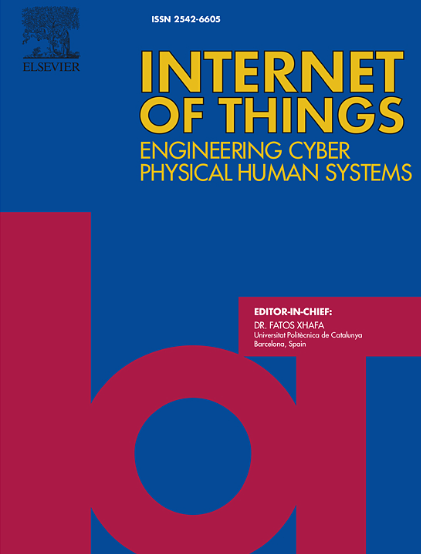UoCAD2:一种无监督在线上下文异常检测方法,使用优化的rnn超参数用于多变量时间序列
IF 7.6
3区 计算机科学
Q1 COMPUTER SCIENCE, INFORMATION SYSTEMS
引用次数: 0
摘要
基于物联网(IoT)的智能设备通过在工业、医疗、农业、环境监测、能源、交通以及智能城市、建筑和家庭中的越来越多的使用,逐渐成为日常生活的一部分。物联网设备生成被称为时间序列的快节奏时限数据。时间序列通常包含异常,即不寻常的模式或与标准的偏差,这可能会中断服务,必须快速检测。许多研究人员尝试使用基于循环神经网络(RNN)的无监督在线异常检测方法来检测未标记异常。rnn是专门设计用来处理顺序数据的。然而,为特定的数据域选择正确类型的RNN和适当的超参数是具有挑战性的。时间序列在线处理的另一个挑战是选择合适的滑动窗口大小,它足够小,可以在有限的时间内处理传入的数据,并且足够大,可以捕获数据中的潜在偏差。本研究扩展了无监督在线上下文异常检测(UoCAD)方法,通过提出UoCAD2来克服这些挑战。UoCAD2在离线阶段对6个RNN变体进行超参数优化,并在在线阶段使用微调的超参数检测异常。实验在三个包含上下文异常的物联网数据集上评估了所提出的框架。精密度、召回率、F1分数和检测时间是本研究使用的评价指标。本研究建议选择基于rnn的模型、最优超参数和窗口大小的最佳组合,用于多变量时间序列数据的上下文异常检测。本文章由计算机程序翻译,如有差异,请以英文原文为准。

UoCAD2: An unsupervised online contextual anomaly detection approach using optimized hyperparameters of RNNs for multivariate time series
Internet of Things (IoT) based smart devices are gradually becoming part of daily lives through their increasing usage in industry, healthcare, agriculture, environmental monitoring, energy, transportation, and smart cities, buildings, and homes. IoT devices generate fast-paced time-bound data known as time series. Time series often contain anomalies, i.e., unusual patterns or deviations from the norm, that can disrupt services and must be detected quickly. Many researchers have tried to detect unlabeled anomalies by employing unsupervised online anomaly detection approaches based on Recurrent Neural Networks (RNN). RNNs are specially designed to process sequential data. However, selecting the right type of RNN and appropriate hyperparameters for a specific data domain is challenging. Another challenge in the online processing of time series is to pick out an appropriate sliding window size, that is small enough to process the incoming data in a limited time and large enough to capture the underlying deviations in the data. This study extends the Unsupervised Online Contextual Anomaly Detection (UoCAD) approach to overcome these challenges by proposing UoCAD2. UoCAD2 conducts hyperparameter optimization on six RNN variants in an offline phase and uses fine-tuned hyperparameters to detect anomalies during the online phase. The experiments evaluate the proposed framework on three IoT datasets containing contextual anomalies. Precision, Recall, F1 score, and detection time are the evaluation metrics used in this study. This study recommends selecting the best combination of RNN-based models, optimal hyperparameters, and window sizes for contextual anomaly detection in multivariate time series data.
求助全文
通过发布文献求助,成功后即可免费获取论文全文。
去求助
来源期刊

Internet of Things
Multiple-
CiteScore
3.60
自引率
5.10%
发文量
115
审稿时长
37 days
期刊介绍:
Internet of Things; Engineering Cyber Physical Human Systems is a comprehensive journal encouraging cross collaboration between researchers, engineers and practitioners in the field of IoT & Cyber Physical Human Systems. The journal offers a unique platform to exchange scientific information on the entire breadth of technology, science, and societal applications of the IoT.
The journal will place a high priority on timely publication, and provide a home for high quality.
Furthermore, IOT is interested in publishing topical Special Issues on any aspect of IOT.
 求助内容:
求助内容: 应助结果提醒方式:
应助结果提醒方式:


